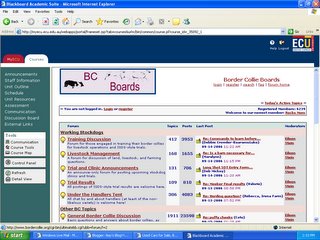Workshop: Twelve

You will first be taken to a central page listing the categories of Bulletin Boards currently active at pvspade.com. These will always include the "Mediaeval Logic and Philosophy" category, and may from time to time include others as well (for instance, a category of Course Bulletin Boards for courses I am teaching). Unless otherwise noted, all Bulletin Boards are open to public viewing by anyone. Click on a category to view Bulletin Boards falling under that category.
All visitors to the Bulletin Boards will now be either "Registered" users or "Unregistered" ones. When you first visit a Bulletin Board, you will be "unregistered." Unregistered users can freely view all messages and replies to messages.
Users who wish to post a new message or reply to a message already posted must "register" before they are able to do so. Registration is easy and painless. But it does involve some steps designed to prevent abuse of the system. Please note that registration is valid only for the particular Bulletin Board you are visiting; if you wish to have "Registered user" status on other Bulletin Boards at pvspade.com, you will have to register for each one separately.
On various pages throughout the Bulletin Boards, usually near the top right-hand side of the page, you will find a link inviting you to "register." When you click on such a link, you will be taken to a page containing legal disclaimers and rules for proper use of the Bulletin Board. These rules are not meant not intimidate legitimate users, as you will see. If you can live with them and want to continue (and I hope you will), click on the "Agree" button at the bottom of the page.
You will next be taken to a registration page that asks you to fill in appropriate information and allows you to configure certain optional features the way you want them. The only information required is a username and a valid e-mail address.
Usernames can be up to twenty-five characters long, including spaces. Unless your name is very long, why not just use your real name, so that others on the Bulletin Boards will know immediately who you are? Please do not use "special characters" that are not part of the standard ASCII character-set for the Roman alphabet. (In other words, avoid accents, diacritical marks, and punctuation in your username.)
The valid e-mail address is essential. After registration, you will not immediately be able to post or reply to messages. Instead, the system will generate a random password and send it to the e-mail address you enter. (Thus, it won't do you any good to enter an e-mail address to which you do not have access, whether it is an otherwise valid address or not.)
After retrieving the new e-mail message with your password, you can use that password (along with the username you entered) to log into the Bulletin Board you registered for. After that, you can change your password to anything you want. You can also reconfigure other options by clicking on the "Preferences" link near the upper right-hand corner of the page (although you cannot change your username without reregistering under a new name). For instance, you can elect to be automatically notified when someone replies to a message you post. Please note: Although other users of the Bulletin Board cannot see your password, I can.



